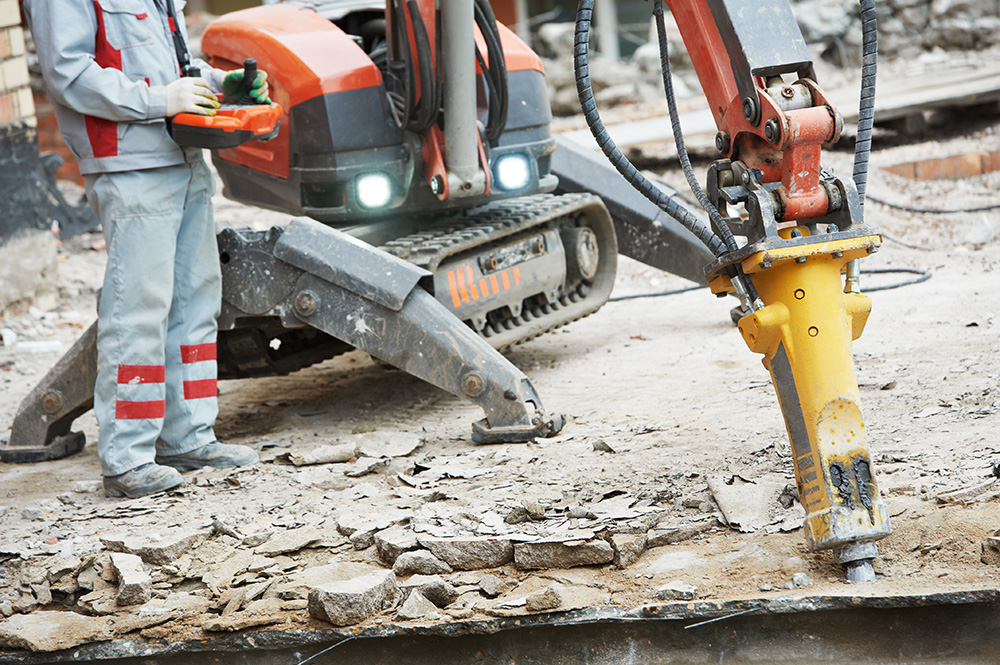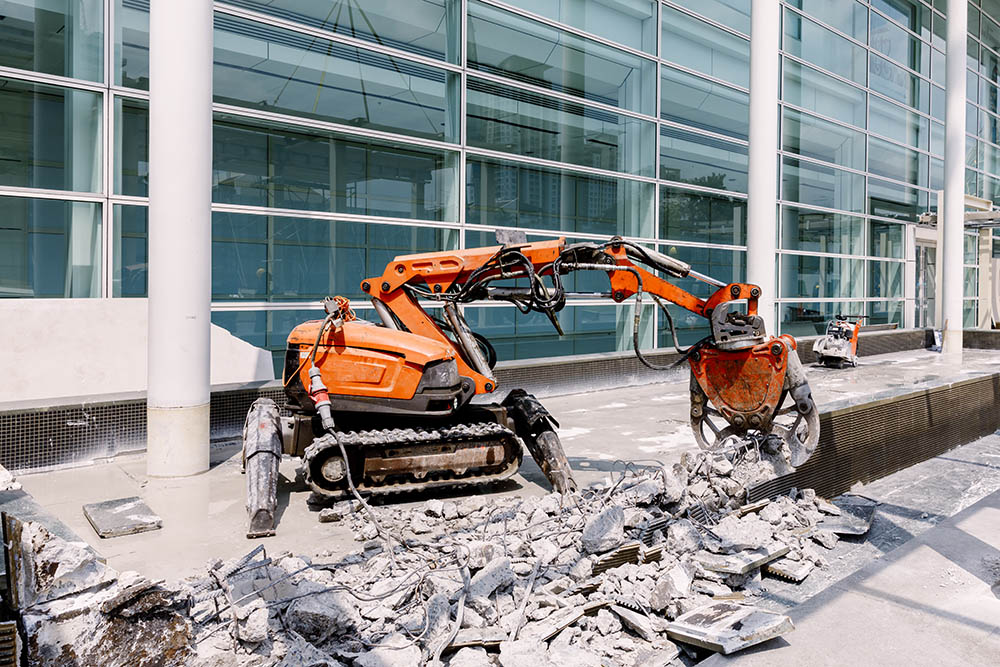Demolition Robot Equipment
Machinery has indeed made human life easy. Not only in one aspect, but in nearly every facet. Worldwide urbanization continues to grow in the form of new buildings, changes in infrastructure, and the remodeling of old cities. All this progress is heavily due to machinery. Through the use of machinery, human labor and workforce is significantly reduced. Machines are not only less costly but also more time-efficient.
Much of the development you see today is due to one player in machinery, the demolition robot. Demolition robots have played a significant role in establishing tall buildings, placing rooftops, and much more. As these machines continue to aid the industry, their value moving forward is tremendous.
Here is what you need to know about demolition robots.
What are demolition robots?
Demolition robots are a type of heavy machinery. Their primary is to demolish buildings once it’s time for new development. However, these robots aid in various other purposes too.
Demolition robots are widely used in the construction industry for demolishment and evacuation. They are crucial in moving heavy materials from the ground floor to higher floors.
Currently, demolition robots occupy 90% of the robotics construction market. These machines are ever-growing in popularity. And as their applications continue to expand, they may even occupy more of the market.

Advantages of Demolition Robots
Demolition robots are revolutionizing the construction industry. But what makes them so practical?
They Come With Tremendous Power
Being a heavy-duty machine, demolition robots have many added advantages. One of the most evident is power. Although the robot’s size is much more compact than its counterparts, its power is much greater. These tools are able to continue forward without interruption or breaks. They can significantly outperform excavators that are five to six times larger.
Remote-controlled Operations
Among demolition robots, you can find that there are a variety of types. One of the classes of demolition robots is remote-controlled demolition robots. The remote-controlled aspect of the robot provides an added control to its features. In addition to greater efficiency, they are safer than the manually operated options. Because operators can control them from outside the machine, the risks are lower. They are safe from harmful elements and unforeseen collapses.
The Three-Armed System
Most demolition robots are equipped with a three-armed system. On construction sites, some areas are compact and dense, making them hard to access. The three-armed system extends the range of reach of the robot. These robots are able to access anything in a 360-degree range. Previously inaccessible areas are now far more approachable. Additionally, the three arms provide better precision and accuracy for more exact work.
Heat Resistant
The evacuation and demolition of buildings takes a large amount of power. With this power comes a lot of heat. As the construction machinery generates this energy, the cylinders inside become hot. This is dangerous to the operator and the engine. Many demolition robots are heat-resistant. This is safer for the operator, the environment, and the cylinders. They keep every component safe and reduce the likelihood of overheating. This also extends the longevity of the demolition robot.
Disadvantages of Demolition Robots
Like all things, there are always drawbacks. Though demolition robots can be advantageous, they have their caveats.
Experienced professionals.
Only experienced and trained professionals can operate demolition robots. Meaning, other members of the crew who lack the specialized training are unable to operate it. Having an untrained person handle the robots is both dangerous and damaging. Because of the required extra care and precision, it is easy to misuse. Extra training is an investment. But it’s needed to safely and effectively use a demolition robot.
Training
Extra training is an investment. But it’s needed to safely and effectively use a demolition robot. If you plan on using demolition robots, providing training is indispensable. This said, trainings cost money and time. Companies planning on operating demolition robots need to budget for the extra expense.
Machine Error
Unlike humans, machines are unable to make cognitive decisions. Their movements are reliant on computer algorithms. While these codes are precise, they are not flawless. Robots can only do the exact job directed by the code. If an unexpected situation occurs, they are not capable to react and adapt as a human would. It is important to recognize that these machines are not without risk.
Investment cost
Demolition robots are expensive. There is no way around it. Not every company can bear the upfront investment cost. They average a market cost of around $200,000. The investment cost requires a stronger pipeline of projects for a profitable ROI. However, many construction outfitters offer rentals for much less. If your use for the robot is limited, this is a good option.
What factors to consider when choosing demolition robots?
Demolition robots are a considerable investment that should be well researched. Different models are preferable for different jobs. There are several factors you should consider when looking to buy one.
Safety codes
Safety codes are necessary for liability purposes. Choose a robot that meets all the required safety codes. Depending on the project, restrictions may vary. Investing in the right machine protects your employees and limits your liability.
Affordable Offline Programming Software
Demolition robots come with programmed software. This includes codes for various jobs and functions. Opt for a robot that has only the software programs you need. Often, there are extra offline features included in the software. If these aren’t necessary to your projects, then they only increase the cost. You want to pay for only what you actually need.
Low energy consumption
Consider robots that have low energy consumption and high-value generation. For both environmental and economic purposes, robots with low energy expenditure but high value are ideal. Efficiently designed, slim, and lightweight robots require less energy per value generation. This saves time and money all while increasing productivity.
Robot controllable features
Look for robots with features that are beneficial to you and your projects. Most people look for compact size, slim shape, fast processing, and the ability to expand. Expandability is necessary to accommodate extra equipment and features. Ideally, you want to find an option that matches the nature of your projects.
Who To Choose?
Here are the top companies which manufacture demolition robots.
Husqvarna
Husqvarna is one of the best manufacturers of demolition robots. They make both manually operated demolition robots and remote-controlled demolition robots. Husqvarna is at the forefront of robotic technology. Their robots contain the latest tech, are low weight, and have high power. They boast functional designs fit for a variety of projects. The Husqvarna dxr 310 and Husqvarna dxr 140 are amongst the best robots from the manufacturers.
Brokk
Brokk is one of the leading companies in successfully manufacturing demolition robots. Unlike other manufacturers, Brokk builds customized demolition robots in addition to standard models. Their current focus is developing the machine intelligence of the robots. As aforementioned, machines lack the adaptability that humans can provide. Refining the “brain” of these robots is the next step in making them more reactive to unforeseen situations.
Bottom Line
Demolition robots are revolutionizing the construction industry. They provide unparalleled help in building demolition. As they continue to be refined, their applications are endless. While they have their nuances, particularly the initial cost, they will become indispensable. Avoid the market price, and consider renting a demolition robot from Rasmussen Equipment. Come see the future of construction for yourself.

